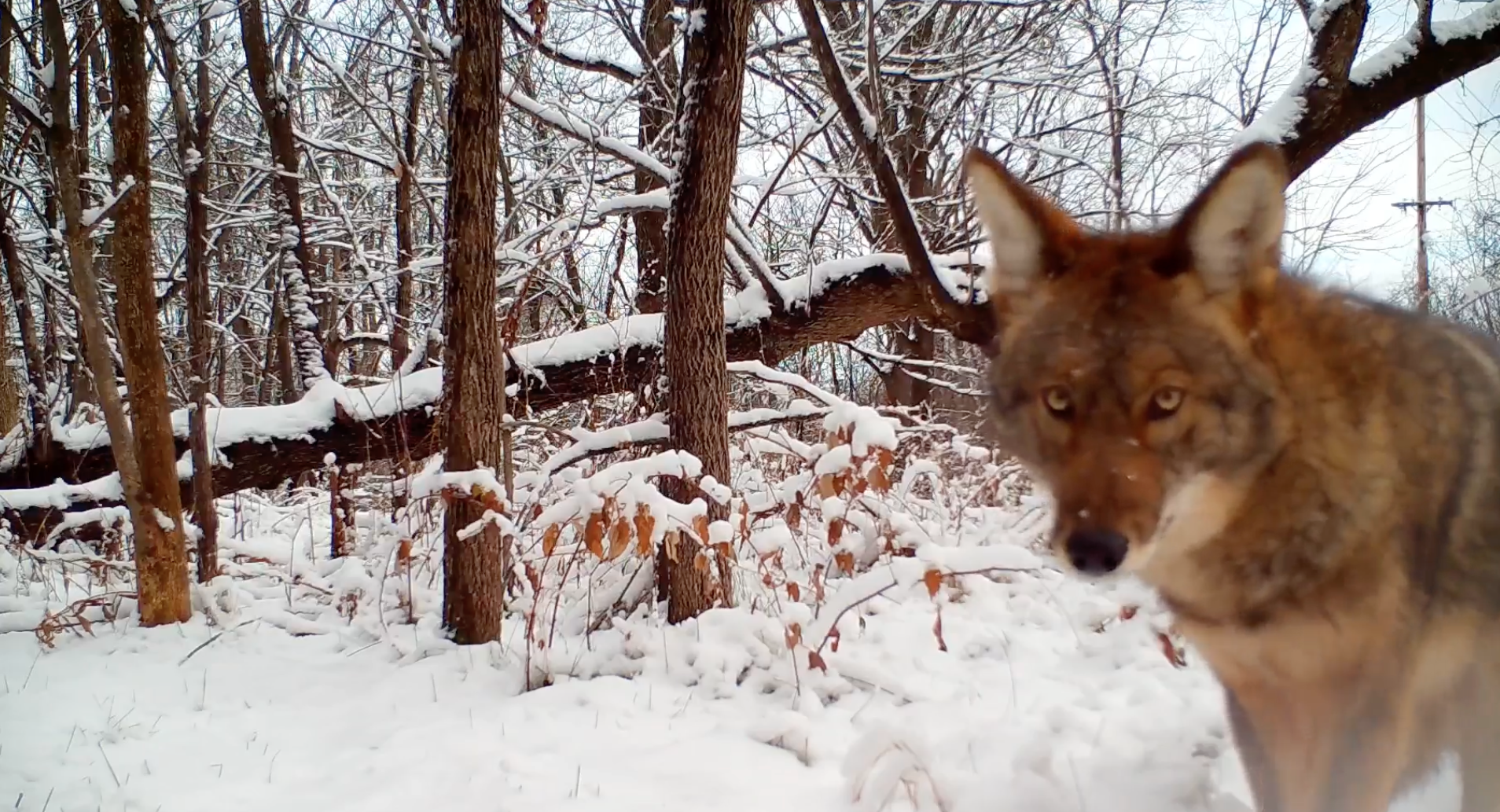What Coyote Stories Tell Us About Our Relationship With Vermont’s Wildlife
Dec. 18th 2024If you live in Vermont, you have probably heard coyotes howl on warm summer nights or read stories about them. They’re a species that capture imagination, but their presence brings mixed feelings for residents. Some see them as a valuable part of the environment, while others view them as a nuisance—and many see them as both things simultaneously.
Traditional research methods, such as surveys, often miss the subtleties of people’s real-life experiences with wildlife like coyotes. That’s where stories can come in. Stories capture the complexity of human-wildlife interactions by revealing the personal meanings people attach to their encounters.
A recent study led by Joshua Morse at the University of Vermont used stories from Vermonters to explore how people feel about coyotes and the roles these animals play in our state’s ecosystems. By collecting and analyzing these stories, the study sheds light on the mixed benefits and challenges that come with living alongside coyotes and suggests ways to approach policies for managing human-coyote interactions in Vermont.
The researchers teamed up with local high school students and the Vermont Folklife Center to gather stories from people across Vermont. These students, trained as community scientists, interviewed friends, family, and community members about their experiences with coyotes. Participants shared everything from simple sightings to deeper reflections on what coyotes represent in Vermont’s natural and cultural landscape. In total, the study collected 150 stories that provided rich, diverse perspectives on what it’s like to live near coyotes.
“These community scientist-led interviews provided a look inside kinds of conversations that I, a PhD student, could never unlock,” shared Morse. “You hear young people talking to their interviewees about not only coyotes but about the landscape they both know and the neighbors they both have relationships with. Taking the ‘expert’ and the university out of the interview opens a window into more authentic conversations Vermonters may be having about coyotes.”
The study found that Vermonters' feelings about coyotes are complex and often contradictory. Some people appreciate the role coyotes play in controlling pests, like rodents and rabbits, and many enjoy hearing their howls at night, which some describe as a beautiful part of living in Vermont’s forests. In these ways, coyotes provide ecosystem services—benefits that nature offers to human life. However, others reported concerns. Some farmers worry about coyotes harming livestock, and some residents feel uneasy about coyotes' presence near their homes. These concerns represent ecosystem disservices, or the drawbacks of living with certain wildlife.
“Both positive and negative feelings toward coyotes were present within our sample, and even in many cases within single individuals,” explained Morse. “For example, a farmer might appreciate the way coyotes keep down the rodent population but in the same breath express worry about their impact on livestock.”
The study suggests a way to vet potential policies that focuses on addressing Vermonters' mixed feelings about coyotes. One example of this approach is considering how current hunting practices may minimize some types of conflict from living with coyotes but also run the risk of exacerbating social conflict around the species. Another is considering how education on preventing coyote conflicts may also help reduce overall unease around the species.
Although the study recommended potential policy implications, Morse and his team emphasize the nuance in resident perceptions of coyotes that can often get lost in policy and management conversations. Morse hopes that this kind of research can lead to novel management and policy conversations.
“At the neighborhood level, this complexity can help residents understand and empathize with their neighbors’ actions that they may not agree with,” said Morse. “If you zoom out to the state scale, the discussion is led by loud, extreme voices either trying to save all coyotes or kill the whole population. Good management—which is easier said than done—would look at the complicated mix of good and bad services coyotes provide, maximizing the good and minimizing the bad.”
The study highlights that there isn’t a one-size-fits-all answer to managing coyotes in Vermont. People’s views on wildlife can vary widely, and policies need to reflect these diverse perspectives. By focusing on the experiences of everyday Vermonters that are often overshadowed in media coverage or policy debates, the research encourages policymakers to find balanced approaches.
Coyotes are here to stay, and understanding our complex relationship with them may be key to fostering a respectful and balanced coexistence.
 ecoNEWS VT
ecoNEWS VT